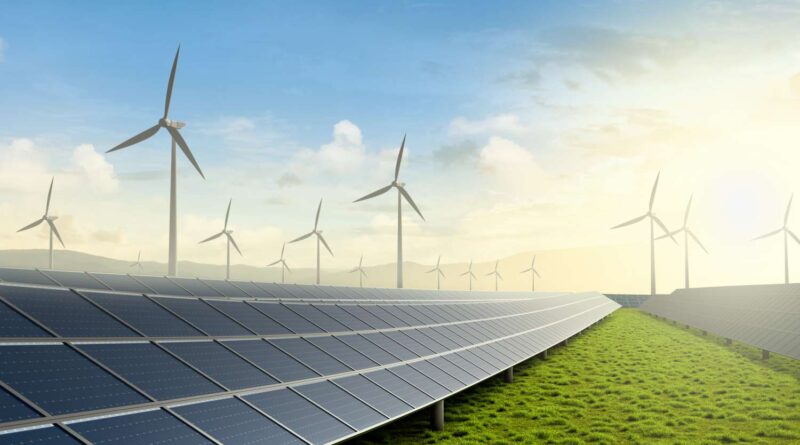India to be the world’s largest driver of energy-demand growth by 2035: IEA
By Abhijeet Kumar
India has quietly pulled off a feat no other major economy has managed — hitting a 2030 energy target five years early. According to the World Energy Outlook 2025 report released by theInternational Energy Agency (IEA), India reached 50 per cent of grid-connected power capacity from non-fossil sources in 2025, thanks to a surge in solar and wind investment that is transforming the country’s energy system.
But the achievement is only part of a larger story. The IEA called India “the largest source of energy demand growth in the world” through 2035, as the country’s economic and demographic rise reshapes global energy flows.
Why India is now the epicentre of global energy demand
Under the IEA’s Stated Policies Scenario (STEPS), India’s total energy demand will increase by more than 15 exajoules (EJ) by 2035 — nearly matching the combined demand growth of China and all Southeast Asian nations. India contributes the most to global oil demand growth in this period, the second-most to electricity and coal demandgrowth, and the third-most to natural gas demand growth, the report noted.
Behind those numbers is an economy expanding faster than any other major country. Between 2010 and 2024, India’s GDP growth trailed only China’s, and from now to 2035 it is expected to grow at an average 6.1 per cent a year, lifting per-capita income 75 per cent higher than today, the IEA said.
That economic surge brings physical scale. India will add the equivalent of one Bangalore every year to its urban population, expand total built-up floor space by 40 per cent, add nearly 12,000 cars a day to its roads, and install over 250 million air conditioners by 2035.
How India’s energy investment is shifting toward clean power
The IEA noted that India’s clean-energy boom rests on a decisive swing in capital flows. In 2015, every dollar invested in fossil-fuel power was matched by one in non-fossil sources — a 1:1 ratio. By 2025, that ratio flipped to 1:4 in favour of clean energy.
Over the past decade, solar PV alone has attracted $113 billion in cumulative investment, compared with $112 billion for all fossil-fuel power generation combined. As a result, non-fossil sources are projected to make up 60 per cent of installed capacity by 2030 and 70 per cent by 2035, accounting for over 95 per cent of all new capacity additions during the period.
What challenges come with the solar and wind boom
Solar and wind generation now supply about 11 per cent of India’s electricity, but their share is set to rise above 25 per cent by 2030 and nearly 40 per cent by 2035, the IEA said. Nuclear power generation will triple by 2035, taking the share of non-fossil sources in total generation past 50 per cent.
This transformation will sharply cut carbon intensity — down nearly 45 per cent to about 400 grams of CO₂ per kilowatt-hour — and slash pollutants such as particulates and sulphur dioxide.
However, integrating variable renewables will pose new challenges. The STEPS scenario sees over 230 gigawatt-hours (GWh) of battery storage added by 2030 and a 35 per cent expansion in transmission, with more than 200,000 km of new lines, including 60,000 km dedicated to renewable integration. India’s Green Energy Corridor project is central to that build-out — the key to ensuring that solar and wind growth translate into reliable power supply.
Can India balance coal’s role while meeting its clean-energy goals?
Despite the renewable leap, coal remains the backbone of power generation, particularly for industry. The IEA said coal demand will rise moderately to 2035, providing dispatchable and flexible generation. Nuclear capacity is set to climb from 8 GW today to 100 GW by 2047, supporting India’s net-zero-by-2070 pledge.
India’s ethanol blending mandate has already reached 20 per cent in gasoline by 2025, aimed at curbing oil imports, while a national carbon market is due to launch for select industries in 2026.
What gaps remain in access and finance
The report noted that even amid growth, nearly 20 per cent of Indians still rely partly on traditional biomass for cooking, underscoring the challenge of universal energy access. The Pradhan Mantri Ujjwala Yojana continues to offer LPG subsidies for poorer households to close that gap.
On financing, the IEA warned that $7 billion in delayed payments to power generators in October 2025 highlight the strain on distribution companies. New reforms — including payment security mechanisms, a payment fund, and state guarantees — have helped restore investor confidence, doubling the share of foreign direct investment in the power sector to nearly 10 per cent from the 2015–20 average.
What India’s rise means for global energy markets
India’s early achievement of its 2030 non-fossil capacity goal, the IEA concludes, “was underpinned by surging investment in renewables.” In sheer scale, no other country is adding more energy demand — or more clean capacity — than India.
Its next decade will decide whether that growth cements a low-carbon path or locks in coal dependence. Meeting India’s vast electrification needs — with 12,000 new cars a day and hundreds of millions of new air conditioners — will shape global markets for solar modules, batteries, LNG, and critical minerals.
Hitting 50 per cent non-fossil capacity in 2025 has turned India into both a primary engine of energy demand and a driver of global decarbonisation. The choices it makes now will ripple across commodity markets and the world’s clean-energy transition.
This article has been republished from The Business Standard.

